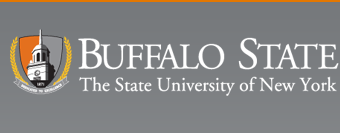
Event Title
The Impact of Social Class on High School STEM Educational Dose
Start Date
31-10-2013 11:00 AM
Description
Wai, Lubinski, Benbow, and Steiger (2010) propose the concept of “STEM educational dose” to describe “…the density of advanced and enriching precollegiate learning opportunities beyond the norm that students participate in,” focusing both on accelerating opportunities (AP courses, special academic training, etc.) and enriching opportunities (science/math competitions, research projects, etc.) (p. 2). The available STEM educational dose for top-performing high school juniors in math and science at two high school sites that vary by location (second-ring suburban vs. urban), social class (affluent vs. high-poverty) and race (majority White and Asian vs. majority African-American and Hispanic/Latino) will be discussed. Gross differences between the levels of STEM educational dose between the sites exist. It appears that the affluent, second-ring suburban school is doing everything that can be expected of a public school to provide a strong STEM foundation (high STEM educational dose), positioning its top-performing math and science students to potentially reach the highest echelon of STEM career achievement, while the high-poverty, urban high school is failing to provide any significant accelerating or enriching STEM experiences (low STEM educational dose), making it very difficult for its top-performing math and science students to meaningfully enter the STEM pipeline at the post-secondary level. Reasons for this disparity will be outlined, with a focus on the negative impacts of urban within-district segregation and accountability-based school reform. Policy recommendations will be offered.
The Impact of Social Class on High School STEM Educational Dose
Wai, Lubinski, Benbow, and Steiger (2010) propose the concept of “STEM educational dose” to describe “…the density of advanced and enriching precollegiate learning opportunities beyond the norm that students participate in,” focusing both on accelerating opportunities (AP courses, special academic training, etc.) and enriching opportunities (science/math competitions, research projects, etc.) (p. 2). The available STEM educational dose for top-performing high school juniors in math and science at two high school sites that vary by location (second-ring suburban vs. urban), social class (affluent vs. high-poverty) and race (majority White and Asian vs. majority African-American and Hispanic/Latino) will be discussed. Gross differences between the levels of STEM educational dose between the sites exist. It appears that the affluent, second-ring suburban school is doing everything that can be expected of a public school to provide a strong STEM foundation (high STEM educational dose), positioning its top-performing math and science students to potentially reach the highest echelon of STEM career achievement, while the high-poverty, urban high school is failing to provide any significant accelerating or enriching STEM experiences (low STEM educational dose), making it very difficult for its top-performing math and science students to meaningfully enter the STEM pipeline at the post-secondary level. Reasons for this disparity will be outlined, with a focus on the negative impacts of urban within-district segregation and accountability-based school reform. Policy recommendations will be offered.

